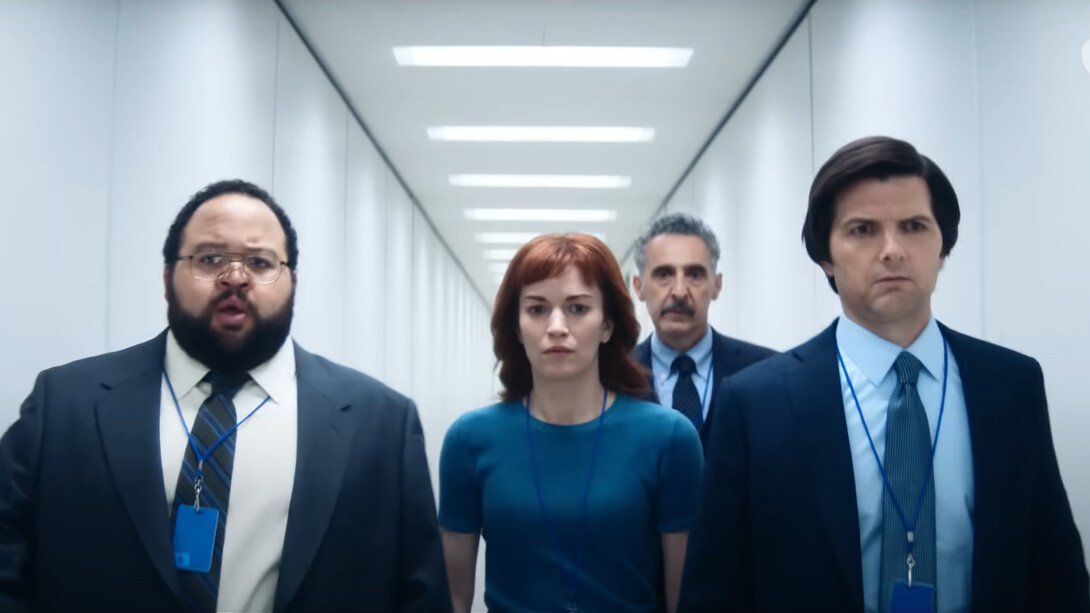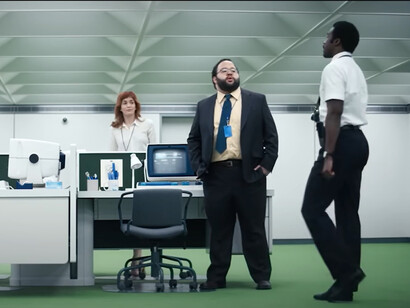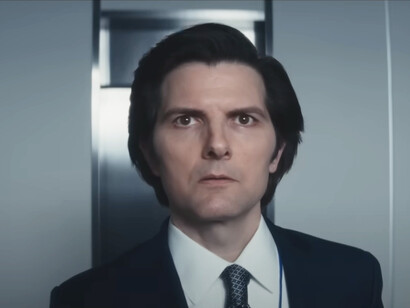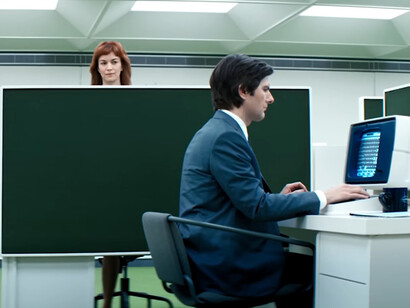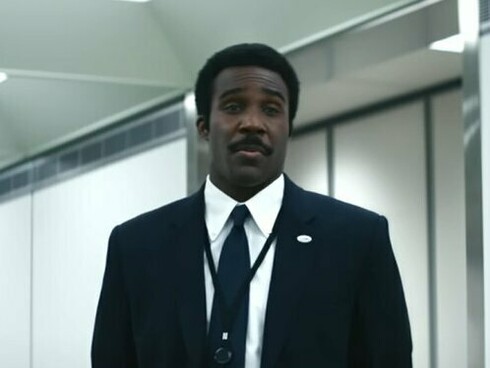Spoiler alert! This may contain some spoilers for the second season of Severance.
The Apple TV+ thriller returned with its second season this year, captivating audiences with its intricate concepts and addictingly measured reveal into the enigmatic world of Lumon Industries. This season not only expanded on the show’s unique premise but also introduced several compelling new characters and narrative arcs that have left an indelible mark on viewers.
Since its debut in 2022, Severance has experienced a meteoric rise in popularity. The season 2 premiere on January 17th drew an unprecedented viewership, and over its five-week run, it managed to amass a total of approximately 3.055 billion streaming minutes. This propelled Severance to become Apple TV+’s most-watched series, surpassing the platform’s previous flagship, Ted Lasso. The show’s success also contributed to a 126% increase in Apple TV+ subscriptions in 2025, a testament to its cultural impact and growing fanbase.
We’ll be going in-depth on characters, episodes, and plot points, so heavy spoilers below!
Britt Lower and Tramell Tillman
Performances play a crucial role in the show’s appeal and commercial success. From big names like Christopher Walken and Patricia Arquette, to small-screen standouts like Adam Scott and John Turturro, talent is in no short supply here. While I could go on and on about each character in detail, let’s focus on my favourites of the season.
Britt Lower delivers an outstanding dual performance. In the second episode of the season, Goodbye, Mrs. Selvig, we see more of her “outie,” Helena Eagan, who was briefly introduced last season. Immediately, her energy is the polar opposite of her fun, rebellious, ”innie” counterpart, Helly R. While the sinister lighting certainly enhances the contrast, it’s Lower’s face and tone that effortlessly signal we’re watching someone entirely different from the character we know and love. A key moment comes early on when her father reprimands her—spitting out, “Fetid moppet.” A quick search in the dictionary confirms his contempt for her innie’s actions last season.
This seemingly nonsensical outburst was actually an incredibly efficient way to establish these characters and their complex dynamic. Moments later, she takes out her frustration on Ms. Cobel/Selvig, desperately trying to wield what little power she has left. Compare this to her performance in Episode 5, Trojan’s Horse, where she’s back to her innie-self, and the difference is night and day. One is kind and considerate, the other vindictive and cruel. Lower presents this dichotomy expertly in her delivery and body language, to the point where you’ll be convinced that you’re watching two completely separate people.
However, the season’s biggest standout by far was Tramell Tillman as Mr. Milchick, the severed floor’s mystifying supervisor. Tillman brings a nuanced depth to the role, balancing corporate affability and superficial pleasantry with underlying menace. His petty feud with child employee Ms. Huang was hilarious, while the scrutiny he faces from his own supervisors added a surprising layer of sympathy. His physicality is nothing short of miraculous, switching from charming to goofy to terrifying in the span of a single scene. Although he was consistently spectacular all season, his true “Emmy moment” came in the finale, when he breaks out some serious dance moves during the Choreography and Merriment marching band performance. His character’s multifaceted complexity resonated with audiences, making Milchick a breakout of the season, whose motives and actions added even more intrigue to the series.
"Woe's Hollow" - Storytelling and world building
Episode 4, Woe’s Hollow, stood out as a personal favourite for its departure from the typical office setting. The episode follows the Macrodata Refinement (MDR) team on an Outdoor Retreat Team-Building Occurrence (ORTBO) to the Dieter Eagan National Forest, named after the twin brother of Lumon’s founder, Kier Eagan. Their excursion leads them to Woe’s Hollow, a site steeped in company lore. This change in scenery allows for deeper character exploration and introduces surreal elements that leave viewers questioning the boundaries between reality and illusion.
Opening on Irving B.’s face after the iconic Severance elevator cue, the audience is immediately drawn into his disoriented headspace. Following the thrilling cliffhanger of Episode 3, we’re left feeling just as lost as he is—Where are we? What are we wearing? What’s going on? This episode is unique in that it follows a singular character’s journey. While the other team members are present, the narrative tracks Irving from beginning to end as he struggles to uncover Helly’s true identity.
The team traverses a barren, snow-covered landscape, encountering ominous twin versions of themselves pointing the way forward. Tensions escalate with a chilling campfire story from Mr. Milchick, exploring Kier’s sinister relationship with his Dieter, cementing the eerie tone. Later, Irving’s harrowing nightmare in the freezing wilderness takes an even darker turn when he encounters a spectral figure known simply as “Woe,” one of Kier’s “four tempers.” This jumpstarts Irving’s final confrontation with the disguised Helena, demanding she be returned to her innie-self, culminating in the forceful, intoxicatingly quotable demand: “Do it, Seth!” These kinds of big, dramatic moments punctuate nearly every episode, ensuring viewers stay hooked.
Critics praised Woe’s Hollow for its atmospheric storytelling and expert expansion of the show’s mythology. This blend of psychological tension and stark beauty of the natural world provided a striking contrast to the sterile confines of Lumon’s offices, offering an exciting, fresh backdrop to the characters' internal struggles.
"Chikhai Bardo" - An achievement in cinematography
Another memorable episode, Chikhai Bardo, earned acclaim for its artistic cinematography. The episode’s storytelling employed innovative visual techniques—long tracking shots, muted colour palettes, and surreal transitions—to evoke a sense of disorientation and introspection. This stylistic approach not only deepened the narrative’s emotional impact but also reinforced the show’s commitment to pushing the boundaries of small-screen cinematography.
Like Woe’s Hollow, the episode reveals a single character’s journey, this time focusing on Mark’s wife, Gemma—a figure previously shrouded in mystery. Her story unfolds through intermittent flashbacks of her relationship with Mark, warm and full of life, contrasting sharply with her current cold, sterile horror at the mercy of Lumon’s testing floor. Even their domestic marital spats feel small in the grander scope of their love, making the brutal realities of the present even more gut-wrenching. The testing floor’s stark, clinical environment, coupled with the ruthless cruelty of her tormentor, Dr. Mauer, heightens the undertones of psychological horror.
Most notably, Chikai Bardo marked the directorial debut of cinematographer Jessica Lee Gagné, who made full use of her skills behind the camera to craft what is arguably the most visually inventive episode of the series, if not one of the most stunning in television history. Split diopters and cross-dissolves are just some of the technical flourishes she employs. However, the highlight of the episode is a breathtakingly long tracking shot, following a tangled clump of wires from the severed floor, down into a darkened control room filled with shadowy, imposing figures. Achieved without CGI, the sequence carries an eerie, otherworldly quality, literally pulling the viewer deeper into the show’s mysteries.
“Cold Harbor” - How to end a season
Picking up right where the previous episode left off, Mark’s innie is confronted by Ms. Cobel/Selvig. She explains the nature of his mysterious and important work in the hopes that he will aid them in rescuing Gemma from the clutches of Lumon. When that doesn’t go well, he steps outside the severed birthing room, reverting to his outie, who then records a message on a camcorder and goes back inside. What unfolds is a thrilling sequence wherein both versions of Mark communicate with each other for the first time. It represents everything I love about the show, not only inventing new and exciting ideas, but executing them in a deliciously entertaining, crowd-pleasing fashion.
When our refiners finally arrive on the severed floor, they’re greeted with a massive new mural depicting all the characters we know and love, illustrated in an almost Renaissance-like tableau. Seemingly celebrating the events of the season, and of course, the completion of Cold Harbor. It’s both intimidating and awe-inspiring, a classic staple in all of Lumon’s attempts at interior design.
It concludes with a gripping cliffhanger, leaving fans eagerly anticipating the next instalment. In the final moments, Mark’s innie rescues Gemma from Lumon's control, but faces a heart-wrenching decision between leaving with her and potentially reverting to his outie forever, or pursuing his own relationship with Helly R. Ultimately, he chooses Helly, not quite riding off into the sunset, but running hand-in-hand down Lumon’s barren white hallways. This unresolved dilemma, coupled with revelations about Lumon's true intentions, set the stage for a complex and emotionally charged Season 3.
The finale's ambiguity sparked widespread discussion and theories among the fan community, highlighting the show's ability to engage viewers even after the credits roll. This engagement is a testament to Severance's intricate plotting and character development, which have become hallmarks of the series.
Cultural impact and future prospects
Severance has not only achieved critical and commercial success but has also permeated popular culture. Promotional stunts, such as listing the fictional Lumon Terminal Pro computer on the Apple Store, have blurred the lines between the show's universe and our reality, enhancing viewer immersion. Additionally, the show's success is evidence of the resurging interest in character-driven narratives within the television landscape.
Season 2 solidified the show's status as a groundbreaking series that masterfully intertwines psychological depth with corporate intrigue. Its growing popularity, compelling performances, and artistic achievements continue to captivate audiences, leaving them hungrily awaiting the next chapter.
With Season 3 officially greenlit, creator Dan Erickson and director Ben Stiller have hinted at a shorter wait between seasons, as well as a clear endpoint for the series. Fans can anticipate further exploration of the complex, intricate themes and relationships that have made Severance a standout of contemporary television.
